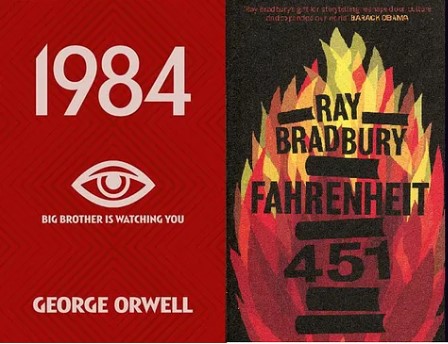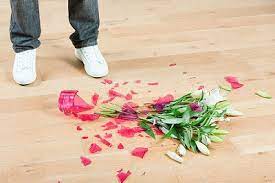By Sienna Lamond, ’26
Staff Writer
For years there’s been this stereotype of the “mean girl” at every high school – it’s expected that there is a female monarch, but why? Why is there an unspoken election of these Queen Bees? Why do they get to be mean to people, yet stay so respected? Why do adolescents fear their peers? Is there a price to pay for being nice, and furthermore, is there a benefit to being mean?
One of the most iconic chick flicks of the early 2000s highlights the mean girl clique in a unique and relatable way. Tina Fey’s 2004 Mean Girls, now in theaters as a musical, features a girl named Cady moving to a small town in Illinois from her previous home in Kenya. Cady’s parents are biologists that study animal behavior, which is told to the audience early on in the movie, but is a relevant detail that carries throughout. As Cady, portrayed by Lindsey Lohan, navigates her new high school, she finds that it isn’t too different from her old life in Kenya. She recognizes that Regina George, the designated Queen Bee, represents the apex predator, the animal at the top of the food chain with nothing capable of tearing it down, and all the other kids in school are her subjects, the smaller and lesser members of the animal kingdom.
The plastics, consisting of Regina and her two best friends, Gretchen Weiners and Karen Smith, operate much like a pack of lions or lionesses. The analogy of a high school to African wildlife represents the primeval nature of the social hierarchy. As an article published in Irishnews.com states, “not only do all human teenagers share similar characteristics, but their typical adolescent behavior is reflected throughout the animal kingdom in creatures as small as insects to as large as whales.” The article then proceeds to break down the similarities into four categories, one of them being social status. Irishnews.com writes that, “In animal hierarchies, high status individuals eat more, live in safer places and reproduce more. They even have stronger immune systems and get better sleep” which helps to show why social status inherently matters so much to high school students. It’s part of our innate behavior to want to be on top because of all the benefits it provides, and if you can’t be number one, being close enough to that MVP also allows for these perks.
Of course, Mean Girls is loved by all for its iconic script, fantastic actors, killer soundtrack, and classic costumes, but what many didn’t realize then and don’t realize now is that the movie is based on a Rosalind Wiseman book titled Queen Bees and Wannabes which is a guidebook for high schoolers, specifically girls. Though this book is devoted to helping teenage girls, it also exposes some taboos of the social structure. It challenges girls, but also adults, to recognize the deeper meanings behind the actions, reactions, and inactions of their peers. The book illustrates a box of characteristics and traits. The qualities inside the box (beauty, athleticism, confidence, right clothing brands, pretty by the guys standard, etc.) are what determines a girl’s popularity while the exterior qualities (overweight, acne, overly-masculine, financial difficulty, etc.) are often present in social outcasts. Wiseman then explains that, “… the words outside of the box. These are weapons. … Cliques are self-reinforcing.” Girls choose to be bystanders when they see bullying occur because standing up to the popular clique would make them stand out enough to be categorized as outside-of-the-box, and being inside-of-the-box provides a sense of social security.
All humans, according to Sigmund Freud’s legendary research and theory of personality, initiate defense mechanisms in an effort to protect themselves. Whether a teen is insecure about their body, grades, social status, financial situation, or home life, all are reasons for projection. This means that negative attributes they see in themselves, they often assign to others as a way to cope. A girl may make fun of another girl’s hair if she’s insecure about how her hair looks, and that will make her feel better. For those who cannot identify these mechanisms in action so easily, this will appear as if the girl is truly being mean. Obviously, it’s not nice to call someone’s hair scraggly, but if that person believes that their own hair also looks scraggly, then it makes more sense and the attack is not without reason or purpose. Being mean just to be mean is not a common occurrence. More often than not, one can find a motive behind most verbal attacks.
However, verbal attacks and “gossip [are] like money,” says 16-year-old Jane, one of the teens interviewed in Wiseman’s book. “We exchange it, sell it, and lend it out. It’s what we have of value.” Ideas expressed through gossip can be interpreted as mean and unwarranted statements. There is a big difference between trying to be mean and inadvertently saying things that are mean. We have to be able to discern between what is malicious and what is benign based on the circumstances we are told things. People often say mean and damaging things about other people without even realizing, partly because they don’t think what they say will ever reach the person they’re talking about, but also because they don’t view what they are saying as mean in the first place. When engaged in a conversation about someone else it is important to know the information you say could end up being shared with that person.
Sometimes people just don’t have anything else to talk about, so they resort to gossiping to keep a conversation going, which, unbeknownst to them, is actively contributing to the spread of rumors and negativity. Gossip is one of the quickest ways mean comments are spread around. So why do we gossip? Well, uninteresting people make up for it by talking about other people to make themselves appear more interesting, and also to make them seem of higher value to the people who “matter” to them. In most social situations, like at work, at the gym, at the salon, and at school, gossip is power. Gossip may not be intended to be mean, but it almost always comes across that way, so it’s important to be mindful of who you’re talking about, and with who.
So, do people really want to be mean? No, not really. Most people don’t even realize they’re being mean even when they are. When they do make a targeted comment, it’s often a reflection of their own insecurities. The most important takeaway from the movie, as well as the book it’s based on, is that putting down others doesn’t lift you up. “Calling someone else fat won’t make you any skinnier,” says Cady. “Calling someone stupid doesn’t make you any smarter. And ruining Regina George’s life definitely didn’t make me any happier.” More often than not, it’s the girls that call you mean who are trying to make up for their own lack of kindness. In the words of the beloved beauty icon, Audrey Hepburn, “for beautiful lips, speak only words of kindness” for no physical beauty can compare to a kind heart and compassionate smile.













